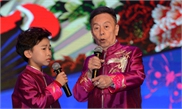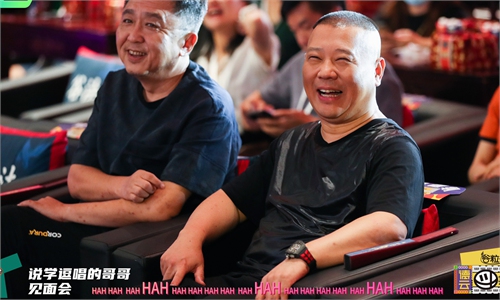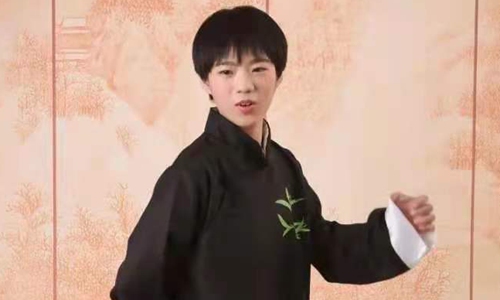
Photo: Courtesy of Youku
Young crosstalk actors have been brought into the spotlight on the Chinese variety show. Over the past few years, crosstalk, traditional comedic dialogues usually involving two performers, have earned favor among younger Chinese even as the stand-up comedy industry continues to boom.
Some insiders say that the two styles of comedy are not in conflict despite their different cultural backgrounds, but still recommend that traditional crosstalk should include "more jokes about trendy subjects" to help maintain the popularity of this Chinese heritage.
TV comedy program Qingchun Shouyiren, which roughly translates to "young art guards," aired its first episode on Friday. The show sees a number of young crosstalk performers talk about traditional Chinese culture during their performances. The show was created by Tianjin TV and is broadcasting on Chinese streaming platform Youku.
Discussing the impact of more modern comedy performances, the show's chief producer Niu Xiaoqian defended her show by reaffirming the status of traditional crosstalk in today's fast developing society.
"These young crosstalk performers are massively popular among young Chinese art lovers. And that's why we decided to invite them as our main guests on our variety show."
Niu said that she believes the two types of comedic performances will be able to achieve a balance when it comes to winning the hearts of young audiences.
"I think crosstalk and stand-up comedy do have similarities as they are both speaking performances with similar target audiences, but there are more differences when you look at them closely. So they don't conflict and can coexist," Niu told the Global Times.
"I went to a stand-up comedy show myself when I took a trip to Shanghai."
Crosstalk, known as xiangsheng in Chinese, is a popular traditional performing art in Chinese comedy. It is typically performed as a dialogue between two performers, or sometimes as a monologue by a solo performer, in a rapid, bantering style of speaking.
First appearing in China during the Ming Dynasty (1368-1644), the art form requires performers crack sarcastic jokes about the dark side of the society to make audiences think.
Stand-up comedy has been making inroads over the past few years as stand-up comedy competition shows became hits in China.
"I think we're facing the challenge brought about by the impact of stand-up comedy as it is attracting more young audiences than ever," said Gao Dongxu, chief analyst from Entbrains, a Chinese entertainment industry think tank.
"The big difference between the two is that the jokes in stand-up comedy are very dense and fast, but crosstalk can take some time before it actually reaches that point of having a laugh. This is something crosstalk may learn from."
Although it is an ancient art, crosstalk performers do not need to worry about it being gradually replaced over time as more and more young audiences are heading out to watch performances.
Based on statistics from Youku, the percentage of crosstalk audiences aged 18-34 increased from 51 percent in 2018 to 64 percent in 2019.
Crosstalk performers also don't see the emerging models of art as a threat.
As new means of performing comedy keep sprouting on the internet such as short videos on Douyin, "we can always integrate that in our performances, too. And that's why we thrive," well-known crosstalk performer Luan Yunping told media.



